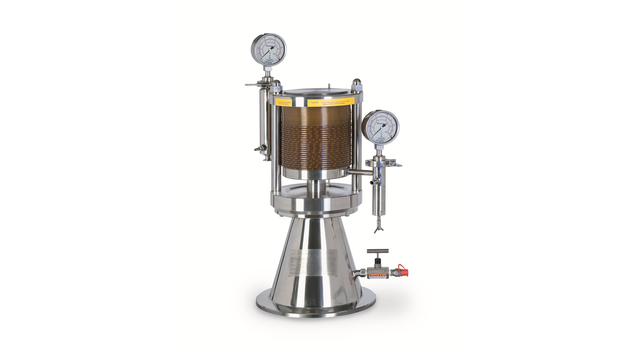LabStak
Alfa Laval offers a wide range of small-scale LabStak modules which are ideal for on-site testing. Valuable data is gained for evaluation of process feasibility, determination of design and up-scaling, optimization of existing production lines or processing of high-value products.

Small-scale LabStak-? modules
In order to ensure the optimum solution, it is often advisable to conduct experiments on a small scale. These can be used to establish process feasibility, determine design data for up-scaling, optimize existing production lines or even carry out small-scale processing of high-value and/or low-volume products.
Our range of LabStak? modules is based on the unique plate-and-frame design with the module sizes: M10, M20, M37, M38 and M39. The liquid capacity of our LabStak? modules varies from only 57 ml of test media volume in the Alfa Laval LabStak? M10 module up to 3 litres in the Alfa Laval LabStak? M39H module. It is possible to test all filtration processes: Reverse osmosis, nanofitration, ultrafiltration and microfiltration.
For the Alfa Laval LabStak? M20 module we offer the possibility to test also spiral wound membranes as the module can be equipped with a specially designed M20-2.5" housing. This makes it a perfect tool for initial spiral element testing before screening on flat sheet membranes.
On-site testing or at Alfa Laval pilot facilities
Alfa Laval provides small-scale modules, units and pilot plants for testing on-site in connection with other process equipment and for testing at our own state-of-the-art Membrane and Application Development Test Centre in Nakskov, Denmark. In both cases, we also provide highly skilled process consultancy services.
Benefits
- You can make the first screening evaluations in your own laboratory and thus get the correct answers to vital questions
- The same design is used for both small-scale and industrial scale equipment which allows you to develop new processes and products
- The data gathered is accurate and reliable for easy up-scaling
- Alfa Laval has its own membrane and application development test centre where experts are ready to help you with process know-how and test work
- You can conduct experiments with both plate-and-frame and spiral wound module configurations - and all filtration processes
膜過濾的工作原理
物理分離
膜過濾是一種物理分離過程,其驅(qū)動力是特殊膜兩側(cè)的壓力差。這一過程的特點是能夠分離不同大小和特性的分子。
幾乎所有的工業(yè)膜過濾都是以錯流過濾的方式進行的,即被過濾的液體在壓力作用下以高速平行于膜流動。
物理屏障
最基本的膜過濾是將單一的進料流通過膜系統(tǒng),將其分離成兩股獨立的流,即滲透液和回流液。將它們分開的膜是一種具有高度專業(yè)特性的物理屏障--一種只有進料流中某些特定成分才能通過的屏障。
通過
這種膜材料的孔隙非常小,以埃(10-10 米)為單位,需要施加壓力才能迫使液體通過。事實上,用于納濾和反滲透的膜的孔隙非常小,即使用掃描電子顯微鏡也無法看到。
Long experience with membranes
Alfa Laval's experience within membrane filtration dates back almost as far as the technology itself, and we wish to share our experience with you.
